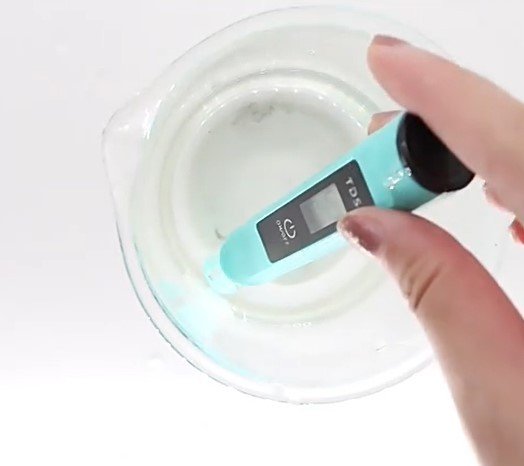Most people are aware that water quality can vary greatly from one location to another, but many don’t realize that the water in their own homes may not be as clean as they think. One way to check the purity of your water is to Check the TDS level at home.
What is TDS?
Total Dissolved Solids (TDS) is a measure of the combined content of all inorganic and organic substances present in water. In general, the higher the TDS level, the more impurities are present in the water.
Water with high TDS levels can have an unpleasant taste and may be unsuitable for drinking, cooking, or bathing. High TDS levels can also indicate that a water source is contaminated with pollutants.
Why Should You Check the TDS Level of Water at Home?
The TDS Level of water is a measure of how much-dissolved minerals are present in a water supply. The lower the level, the better. This means that a greater percentage of your water intake comes from groundwater rather than surface water. The TDS Level can be helpful for several reasons:
- It can help you make smart water choices by indicating which types of minerals are present in the water and which restaurants and other places may use high-quality potable water.
- It can help you figure out whether you’re living in areas with an unhealthy diet or if there’s something else going on with the tap that could be causing your home to have low TDS levels.
- It can help you identify potential health risks associated with high levels of dissolved minerals in our drinking water, like cancer and birth defects.
How to test TDS levels at home?
There are a few ways to test the TDS level of your water at home. You can purchase a TDS meter, which is an electronic device that measures the total dissolved solids in a liquid. Or, you can use a home test kit, which uses a chemical reaction to measure the total dissolved solids.
TDS meter
If you’re concerned about the quality of your home’s water, a TDS meter is a quick and easy way to check it. TDS stands for total dissolved solids, which is a measure of all the inorganic substances in water. The higher the TDS level, the more impurities are present.
To use a TDS meter, simply turn it on and dip the probe into your water sample. The meter will display reading in parts per million (ppm). The EPA recommends that drinking water have a TDS level below 500 ppm.
TDS meters aren’t perfect, and they can’t measure everything that might be in your water. But they’re a good way to get a general idea of the quality of your water and whether it falls within acceptable levels.

Home test kit
A home test kit is a great way to check the TDS level of your water. Follow the instructions that come with the kit, and you’ll generally need to:
- a. take a water sample,
- b. dip the test strip in the water sample,
- c. wait for the results, and
- d. compare the results to the chart that comes with the kit.
If your TDS levels are too high, you may need to invest in a water filtration system.
Recommended Buying:
Konvio Neer Automatic Calibration Pen Type Water test kit
Nexqua Water Testing Kit
Ideal TDS levels for different purposes
The ideal TDS level for drinking water is between 0-50 ppm. The best way to check the TDS level of your water is to use a TDS meter. You can find these at most hardware stores, and they are relatively inexpensive.
If you are using your water for gardening or other purposes where the quality of the water is not as important, the ideal TDS level will be higher, between 50-200 ppm. Again, the best way to check the TDS level of your water is with a TDS meter.
How to improve TDS levels?
If you are concerned about the TDS level of your water at home, there are a few things that you can do to improve the quality of your water.
One way to improve the TDS level of your water is to install a water filtration system. There are many different types of water filtration systems available on the market, so it is important to do some research to find one that will suit your needs. A water filtration system will remove impurities from your water, and it can also help to improve the taste and smell of your water.
Another way to improve the TDS level of your water is to have it regularly tested. You can contact your local water supplier or environmental agency to arrange for a test. Once you know the TDS level of your water, you can take steps to improve it if necessary.
Bestselling TDS meters in India
[azonpress_tables id=”38″]
Conclusion
Checking the TDS level of water at home is a simple but important task. By using a TDS meter, users can ensure that their water is safe to drink and of the highest quality. Additionally, by understanding what TDS levels are acceptable, users can make informed decisions about their water consumption.










